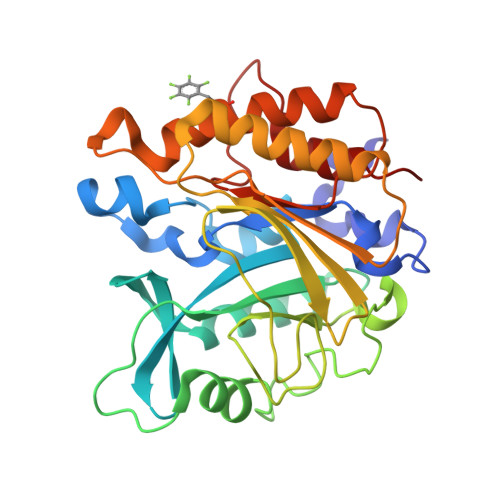Fluorinated Aromatic Amino Acids Distinguish Cation-pi Interactions from Membrane Insertion.
He, T., Gershenson, A., Eyles, S.J., Lee, Y.J., Liu, W.R., Wang, J., Gao, J., Roberts, M.F.(2015) J Biol Chem 290: 19334-19342
- PubMed: 26092728
- DOI: https://doi.org/10.1074/jbc.M115.668343
- Primary Citation of Related Structures:
4RV3, 4S3G - PubMed Abstract:
Cation-π interactions, where protein aromatic residues supply π systems while a positive-charged portion of phospholipid head groups are the cations, have been suggested as important binding modes for peripheral membrane proteins. However, aromatic amino acids can also insert into membranes and hydrophobically interact with lipid tails. Heretofore there has been no facile way to differentiate these two types of interactions. We show that specific incorporation of fluorinated amino acids into proteins can experimentally distinguish cation-π interactions from membrane insertion of the aromatic side chains. Fluorinated aromatic amino acids destabilize the cation-π interactions by altering electrostatics of the aromatic ring, whereas their increased hydrophobicity enhances membrane insertion. Incorporation of pentafluorophenylalanine or difluorotyrosine into a Staphylococcus aureus phosphatidylinositol-specific phospholipase C variant engineered to contain a specific PC-binding site demonstrates the effectiveness of this methodology. Applying this methodology to the plethora of tyrosine residues in Bacillus thuringiensis phosphatidylinositol-specific phospholipase C definitively identifies those involved in cation-π interactions with phosphatidylcholine. This powerful method can easily be used to determine the roles of aromatic residues in other peripheral membrane proteins and in integral membrane proteins.
Organizational Affiliation:
From the Department of Chemistry, Boston College, Chestnut Hill, Massachusetts 02467.

















